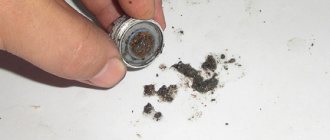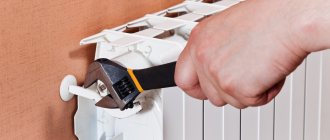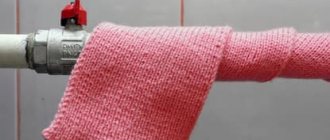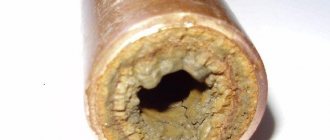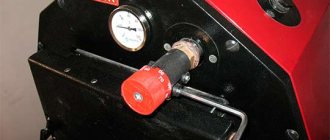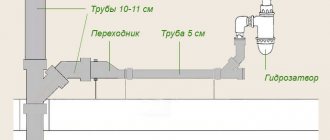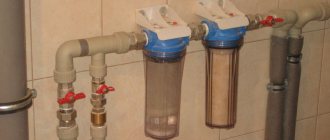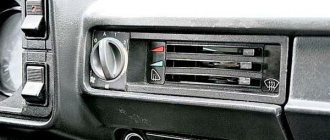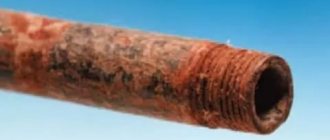The warmth of your home is always under control!
The TEPLOCOM GSM heat exchanger is designed to inform you about the state of the heating system and warn you about emergency situations leading to a stoppage of heat supply, as well as control the heating system via a GSM channel.
Teplocom Teplocom (Teplocom GSM). Main characteristics
The TEPLOCOM GSM heat exchanger, remote control system of the boiler house via telephone, work via the GSM channel, simple installation, effective temperature control, monitoring of the boiler house, notification of emergencies, low costs for maintaining the system.
Electric boiler Kospel EKCO.L2.
At the beginning of this review, we would like to remind you that electric boiler
Is a device that is designed to heat rooms by heating the water flowing through the boiler coolant with an electric current. Of course, this is just a general concept and in electric boilers, in addition to the coolant and the heating element, there are a lot of automatic and other systems that are aimed at reducing the cost, protecting and increasing the efficiency of the boiler, which we will also talk about in this article.
I would like to say a few words about the manufacturer KOSPEL. The Kospel company was founded in 1990 by its current president, Krzysztow Lukasik, starting the production of its own water heaters and boilers. Based in the Republic of Poland, Kospel is one of the largest manufacturers of water heaters and electric boilers in Europe. The company employs more than 450 people, and the company's products are used by about 6 million people, not only in Europe, but also in Asia and Africa. The capital and employees of the company are Polish citizens. Thanks to innovations, implementation of technologies and constant interaction with customers, the company has become one of the main competitors in the global market for water heaters and electric boilers.
It is also worth noting that electric boilers are mainly used with indirect water heaters, water heaters, which provides not only heat and hot water in the house, but also decently saves finances, compared to installing other types of water heaters.
Teplocom GSM teploinformator (Teplokom GSM). Appointment
The TEPLOCOM GSM heat exchanger is designed to inform you about the state of the heating system and warn you about emergency situations leading to a stoppage of heat supply, as well as control the heating system via a GSM channel. The heatinformer Teplokom GSM can be installed to control the boiler room of your home, summer cottage, office.
Call the number of the heat exchanger - an SMS will be sent in response with all the parameters at the time of the call.
- Everything is included!
- No configuration required!
- Insert the SIM card and the heat exchanger is ready to work!
Android application will allow you to control the heating system and adjust the heat exchanger
Application of electric boilers Kospel L2.
Electric boiler Kospel L2
- it is customary to use in heating systems together with indirect heating boilers and thermostats, which makes the boiler operation fully automatic, does not require your intervention and allows you to program the room temperature at different times of the day and days of the week, and also provides your home not only with warmth and comfort, but also with constant hot water supply. I would like to note that modern indirect heating boilers, which our store offers, which you can go to by the link, have the ability to screw an electric heating element into them and in the summer when heating of the room is not required, hot water is heated separately and is constantly present.
As we wrote above, KOSPEL EKCO electric boilers can not only independently provide your home with heat, but also work in tandem with a solid fuel boiler or fireplace, which is gaining great popularity in the modern heating world.
The electric boiler uses a seven-story control, which allows you to control the boiler smoothly, depending on the requirement, and when installing a thermostat, the operation of the boiler will be aimed not only at achieving a comfortable and set temperature, but also at saving electricity.
Electric boilers KOSPEL EKCO L2 with an operating power of up to 8 kW can be connected to both 220 V and 380 V. That is, up to 8 kW you can have either one phase or three.
Teplocom GSM teploinformator (Teplokom GSM). Capabilities
It is quite difficult to manage the operation of a boiler house at a house if you do not live in such a house all the time or often leave it. But I want to be sure that everything is in order in the house, and I also want to come to a country house in winter and go into a warm house. How to solve this problem?
To date, there is already a modern system for remote control of the boiler room through the telephone, this is the Teplocom GSM heatinformer, which allows you to remotely monitor and control the autonomous heating in your house.
The Teplocom GSM heat exchanger allows you to remotely control your home boiler room during your absence. With the help of Teplocom GSM, you can warm up your country house or summer cottage in advance, if you do not live in it permanently. The heat exchanger will prevent pipes from freezing in the cold season by setting the minimum heating mode. The Teplocom GSM heat exchanger significantly reduces fuel consumption by remotely controlling the operating modes of heating boilers. Teplocom GSM will allow you to receive useful information about the operation of your heating system and diagnose equipment operation.
Warranty documents
When purchasing equipment, you receive a warranty card, installation and operating instructions. In the event of equipment failure, the warranty card entitles you to free warranty repairs in specialized service centers. Equipment requiring additional permits (gas equipment, etc.) is supplied with: a certificate, a permit for use, or a replacement EAC Certificate with technical regulations).
In accordance with Decree of the Government of the Russian Federation No. 55 dated January 19, 1998, the following groups of goods are not subject to return and exchange: ... 11. Technically complex household goods for which warranty periods are established (metal-cutting and woodworking household machines; electrical household machines and appliances ; household electronic equipment; household computers and duplicating equipment; photographic and film equipment; telephones and facsimile equipment; electric musical instruments; electronic toys, household gas equipment and devices) (as amended by the RF Government Decisions of 20.10.1998 N 1222, of 06.02 .2002 N 81).
Typical malfunctions and damage to boilers, their causes, remedies and warnings
Category: Possible malfunctions in the operation of steam boilers.
| Malfunction | The reasons | Measures taken |
| 1. Boiler pressure drops or rises | a) The evaporator or smoke tube in the boiler has burst (pressure drops rapidly, at the same time the water level leaves the water indicating device, there may be a pop in the firebox. Steam comes out of the chimney). b) The safety valve is defective. c) Fistulas in pipes, not compensated by an increase in supply (steam pressure drops). d) Automatic regulators are faulty. e) The pulse valve is closed or the pipeline to the steam pressure regulator is clogged. | a) Immediately take the boiler out of operation. After the boiler has cooled down, plug or replace the burst pipe. In fire tube boilers, it is sufficient to stop the combustion to silence the smoke tubes.b) Adjust the safety valve or take the boiler out of operation to eliminate the malfunction. c) Take the boiler out of operation, plug or weld damaged pipes. d) Check the operation of automatic regulators. e) Switch to manual combustion control and eliminate the malfunction. |
| 2. The superheated steam temperature dropped with the main desuperheater turned on. | a) The normal operation of the superheated steam temperature regulator is abnormal. b) The desuperheater passes (fistula). c) The coating collapsed (burned out) on studded screens. | a) Eliminate the malfunction of the regulator. b) Switch off the desuperheater and continue to operate the boiler or switch off the boiler and repair the damage. c) As soon as possible, restore the coating layer upon termination of the boiler operation. |
| 3. The temperature of the superheated steam has dropped with the main desuperheater off or not. | a) The saturated steam humidity has increased due to a high water level and / or a high salt concentration in the boiler. b) The heating surface of the superheater is dirty. | a) Reduce the water level in the boiler, bring the salinity of the boiler water to normal by blowing. b) Blow off the superheater; after stopping the operation of the boiler, inspect the superheater and clean it. |
| 4. The temperature of the superheated steam has increased | a) The reason specified in clause 2, a. b) Bypasses the upper or lower blowdown valve. c) Large excess of air in the firebox. d) The heating surfaces of the boiler and economizer are dirty. e) Fuel atomization is unsatisfactory, leading to afterburning of fuel in the gas ducts. f) The temperature of the feed water has dropped. | a) See clause 2, a. b) Check the tightness of the valves and eliminate the faults. c) Reduce air pressure. Check the tightness of the skin. Eliminate leaks immediately or, if this is not possible, upon arrival at the port. d) Carry out soot blowing. At the next decommissioning of the boiler, clean the outside of the boiler heating surfaces. e) Find out the reasons and take the measures specified in clause 11. f) Raise the feed water temperature to the specified one. If the measures taken are insufficient and the temperature of the superheated steam is higher than normal, reduce the boiler load. |
| 5. The water level in the water indicator rises or falls | a) The water indicator shows an incorrect level. b) The normal operation of the power regulator is disturbed. c) The normal operation of the feed pump is disturbed. | a) Blow out the water indicating device. b) Switch to manual power control, eliminate the regulator malfunctions. c) Strengthen monitoring of the level. Start the second pump, adjust or stop the faulty one, eliminate the fault immediately. |
| 6. The water level in the water indicator is not visible | a) Water has been missed from the boiler (no water appears when the appliance is blown out). b) The boiler is overpowered (when blowing out, the level appears, but quickly goes up, beyond the limits of the water indicating device). | a) Take the measures specified in clause 1 a. b) Reduce combustion, close the stop valves, reduce the power supply to the boiler (do not close the supply valve completely); find out and eliminate the cause |
| Note. With a significant over-feeding of the boiler, it is difficult to determine the presence of water in the water indicating device, even by blowing it out. There is doubt about the presence of water in the device. In this case, it is necessary to close the securing valves to the device from the steam and water spaces of the boiler and slightly open the blowdown valve of the device. In the presence of water in the device, the level will slowly drop under the influence of pressure and its own weight and will be clearly visible. | ||
| Malfunction | The reasons | Measures taken |
| 7. The water level in the water indicating device fluctuates sharply | a) The salinity or alkalinity of the boiler water is too high. b) "Boiling" of water in the boiler (accompanied by hydraulic shocks in the steam line, a decrease in the temperature of the superheated steam). c) Oil products got into the boiler (phenomena are similar to "boiling up".Whitish-hazy appearance and characteristic smell of the boiler water sample. Layer of oil or fuel in water indicating devices, but not always). | a) With the permission of the chief mechanic, reduce the boiler load. Blow out the boiler. Bring the indicators of salinity or alkalinity to the norm, and then raise the load to the required one. b) Reinforce the top blowing. c) Reinforce the top blowing. |
| 8. The water level in the water indicating device does not fluctuate or differs from the level in another device and slowly recovers after blowing | a) The channels in the water indicator are clogged or the gaskets are incorrectly installed. b) The channels to the water indicating device are clogged | a) Replace the device with a spare one. b) Remove the device, clean the channels up to the secant valves. If necessary, take the boiler out of operation. |
| 9. Black smoke coming out of the chimney | a) Lack of air. b) Fuel atomization is unsatisfactory. c) The air supply has stopped (the fan is faulty or has stopped). | a) Check the position of the diffusers and dampers of the air ducting devices. Raise air pressure. Eliminate possible leaks in the air ducts. b) Find out the reasons and take the measures specified in clause 11 of this appendix. c) Reduce the boiler load. Stop fuel supply if necessary. Take measures to eliminate the fan malfunction. |
| 10. White smoke coming out of the chimney | a) Water gets into the fuel. b) Large excess of air. c) Fuel overheating. | a) Take the measures specified in paragraph 1 a, b. b) Adjust the air supply. c) Bring the fuel temperature to normal. |
| 11. Fuel atomization is unsatisfactory | a) Low fuel heating temperature. b) Fuel pressure is low. c) The fuel passages of the injector are clogged. d) The steam channels are clogged or condensate has accumulated in the steam line in front of the nozzles (for steam-mechanical nozzles) e) The nozzles of the nozzles are worn out, the heads are coked. f) Poor mixing of fuel with air due to improper installation or deformation of the air guide devices. g) Nozzles or diffuser incorrectly positioned along the lance axis. h) There are gaps and leaks of fuel due to improper assembly of the injectors. | a) Increase the fuel temperature. b) Raise the fuel pressure to normal. c) Blow with steam or disassemble the nozzle and clean. d) Blow out the steam line in front of the nozzles and steam passages, increase the steam pressure, or change the nozzle. e) Check the conformity of the nozzles to the drawings, replace the worn parts. f) Check installation of air baffles, correct or replace defective parts. g) Move the nozzle or diffuser (center the nozzle). h) Change the nozzle. Check the condition and fit of the surfaces of the sprayer parts. |
| Malfunction | The reasons | Measures taken |
| 12. Ripple and pops of the torch, vibration of the front of the boiler | a) Increase in the amount of water in the fuel. b) Nozzles or diffuser incorrectly installed. c) Fluctuations in fuel pressure. | a) Take the measures specified in clause 3.6.11 of these Rules. b) Center the nozzle. c) Check the operation of the fuel pressure regulator. Repair the fuel pump malfunction. |
| 13. Hissing and fading torch | a) Water ingress into fuel. b) Increased content of mechanical impurities in the fuel. | a) Ensure fuel quality. b) Check the serviceability and cleanliness of the fuel filters and injectors. Go to receive fuel from another tank. |
| 14. The appearance in the furnace of a ragged flame with sparks | a) The reason stated in clause 12 6. b) Excessive heating of the fuel in front of the injectors. | a) See item 12 b. b) Bring the fuel heating temperature to normal. |
| 15. Separation or extinction of the torch when operating at low loads | a) Significant overheating of the fuel. b) Increased or decreased steam pressure (for steam mechanical nozzles). | a) Reduce the fuel heating temperature. b) Adjust the steam pressure. |
| 16. The safety valve leaks | a) Dirt and scale got under the valve.b) Support surfaces are nicked or corroded. c) There are leaks between the seat and the valve body. | a) Take the boiler out of operation, turn it off and drain it. Clean valve. b) The same. Thoroughly grind or grind the valve seat together with the valve disc, followed by lapping. at the same. Eliminate leaks between seat and valve body. |
| 17. The closing pressure of the valve after detonation is below the required | a) The valve stem is sticking in the guide. b) The quality of the valve spring is unsatisfactory. | a) Eliminate the misalignment of the valve guide and stem. b) Check the rigidity of the spring and, if necessary, replace it. |
| 18. Powerful sonic boom with the release of flue gases from the furnace | Explosion of gases in the furnace. | Stop fuel supply. Extinguish the flame. Ventilate the furnace for 5 minutes; inspect the boiler and gas ducts. If there is no damage, ignite the injector again. |
| 19. Overheating of the boiler casing | a) Afterburning of fuel in gas ducts. b) The brickwork collapsed, the insulation burned out. | a) Find out the reason and take the measures specified in clause 11. b) In case of significant destruction of the masonry, remove the boiler from operation. Eliminate defects in masonry and insulation. |
| 20. Fire in the tail surfaces of the boiler heating, detected by a sharp increase in the temperature of the casing, or flue gases | a) Intensive soot deposition at low loads and its ignition during the subsequent transition to normal load with untimely soot blowing. b) Air leaks into the gas side due to subsidence or weakening of pipes in the tube sheets of air heaters, the presence of cracks in the tube sheets (on the lintels), damage to the pipes themselves. | a) Follow the instructions for this type of boiler installation. b) The same. As soon as possible, eliminate air leaks into the gas side of the air heater. |
| 21. Deformation of flame tubes, fire chambers, drums and collectors | a) Local overheating of the walls due to the presence of a significant scale layer. b) Ingress of oil products on the heating surface from the steam-water side. c) Inadmissible lowering of the water level in the boiler (water leakage). d) The presence of foreign objects in the boiler. | a) Observe the established boiler water regime; if limescale appears, thoroughly clean the heating surfaces. b) Observe the operating instructions for the condensate feeding system. If oil products get into the boiler, remove it from operation and leach it. c) Carefully observe the water level and the technical condition of the water indicating devices. d) Carefully inspect the boiler before closing the necks and manholes. |
| 22. Cracks in drums, collectors, flame tubes and tube sheets of fire chambers | a) Frequent ingress of cold air into furnaces with hot internal surfaces. b) Rapid cooling of boilers when they are taken out of operation or rapid rise of steam in them. c) Thinning of the walls due to corrosion corrosion. d) Alkaline brittleness of the metal. e) Violation of the boiler repair technology. | a) Make sure that the air ducting devices are closed when changing modes or switching off the boiler. b) Maintain the time norms for putting the boiler in and out of operation in accordance with the operating instructions. c) Perform boiler cleaning in a timely manner, carefully observe the water regime; take timely repair measures. d) Check the water regime of the boiler and, if necessary, correct or change it. e) Strictly observe the technology and technical conditions for boiler repair. |
| Malfunction | The reasons | Measures taken |
| 23. Bulges and burns in the evaporator tubes | a) The reasons stated in clause 2.1. b) Partial or complete blockage of pipes. c) Significant thermal imbalances on the gas side. d) Thinning of pipes as a result of wear and tear. e) Disruption ("overturning") of circulation in water-tube boilers. | a) See clause 2.1. b) See clause 2.1 a, d c) Carefully regulate the combustion process, make timely cleaning of the gas ducts.d) Perform timely wear control and replacement of pipes. e) Observe the instructions for bottom blowing, especially for screen collectors. |
| 24. Steam passes at the ends of boiler pipes, in riveted seams and ties | a) Weakening of rolling joints and riveted seams under the influence of sudden changes in temperature. b) The appearance of fistulas and corrosive corrosion due to accumulations of soot at the ends of the pipes. c) Violation of pipe rolling technology. | a) Maintain the time norms for putting the boiler in and out of operation, according to the operating instructions. b) Monitor the correct operation of the soot blowers; when taking the boiler out of operation, completely clean the boiler from soot and other deposits. c) Observe the rolling technology, avoiding cutting pipes. |
| 25. Corrosion of drums in the evaporator tubes from the inside, flame and smoke tubes from the outside | a) Accumulation of dirt and sludge in the water space; undersludge corrosion. b) The action on the metal of acids, salts, dissolved oxygen, carbon dioxide. c) Ingress of moisture on steam-water surfaces during long-term "dry" storage. | a) Observe the boiler blowdown regimes and water regime; timely remove iron and copper oxides from the boiler and carry out chemical cleaning. b) Observe the norms of the boiler water regime. After carrying out chemical cleaning when putting the boiler into storage, thoroughly rinse it. c) Observe the rules for storing boilers. |
| 26. Outside corrosion of drums and pipes | a) The action of moisture in case of poor external cleaning of the boiler, causing the development of corrosion. b) Poor insulation condition, favoring local build-up of soot and water. | a) Thoroughly clean the boiler and drain it after cleaning. b) Monitor the condition of the insulation of drums and pipe passages through the insulation, take measures to exclude the ingress of soot and water under the insulation or masonry. |
| 27. Sagging, fistulas, cracks and ruptures of superheater pipes due to their overheating (burnout) | a) Skidding of pipes by deposits of salts and oil and uneven distribution of steam through the pipes. b) The presence of thermal distortions due to uneven and large deposits of soot on the outer surfaces of the superheater or disruption of the normal operation of combustion devices. c) High-temperature corrosion under the influence of aggressive compounds of vanadium and sodium contained in external ash deposits. d) Passing steam through the baffles of the superheater and disruption of steam circulation in the section. e) Lack of steam consumption through the superheater when the boiler is running. | a) Carefully control the salt composition of the feed and boiler water, observe the norms of the water regime; take measures to prevent water from being thrown into superheaters. b) Keep the heating surfaces of the boiler and superheater clean by using soot blowers correctly. Maintain the normal operation of combustion devices. Use fuels whose quality meets the requirements of GOST. at the same. d) Observe the correct assembly of the partition walls and the degree of their wear. e) Observe the operating instructions regarding blowing out the superheater. |
Similar articles
- Marine auxiliary boiler fittings
- Combined heat recovery boilers
- Marine recovery boilers, purpose, device
- Shukhov system vertical combined boiler
- Auxiliary double-circuit boiler
- Auxiliary water tube boilers
- Auxiliary fire tube boilers
- Classification of marine auxiliary boilers
- The main indicators characterizing the boiler
- The purpose of the auxiliary boiler plant and its diagram
Rating 0.00 (0 Votes)
Tags: Auxiliary boilers, Possible malfunctions in the operation of steam boilers

